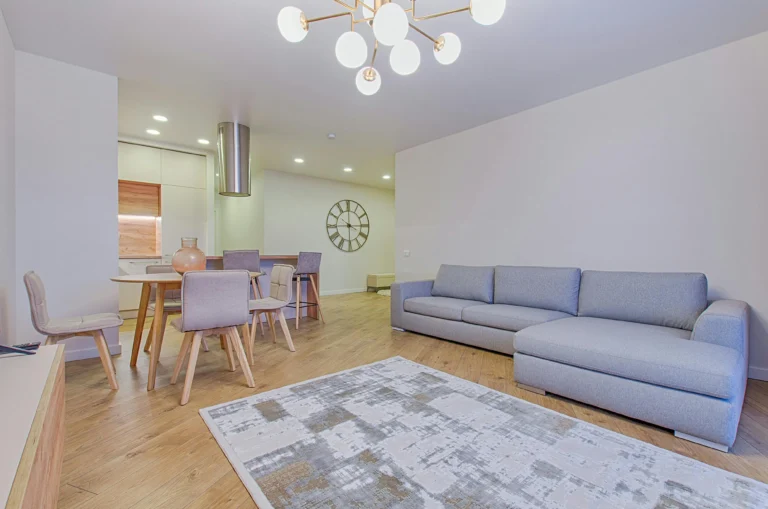Congratulations if you’ve added a dehumidifier to lower the humidity in your basement! Did you know there are easy ways you can make your air conditioner more efficient? Using your dehumidifier correctly can make your basement much drier and more comfortable, but some mistakes might make it less effective. Doing a couple of simple things can help your dehumidifier reduce allergens and save you money.
1. Where You Place Matters: Basement Moisture Control
Depending on where you put your dehumidifier in the basement, it may not be as effective. Many people think that putting their dehumidifier in a corner or up against a wall will keep it out of sight. Consequently, there is less airflow, which cuts down on how efficient the unit can be.
Top Strategies for Placing the Tree
To help the dehumidifier work well, set it up in the center of your basement so that air circulation reaches every area. It’s best to arrange the heater about 6-12 inches from any surface so that the air can circulate properly. Place your TV as far from air vents and ducts as possible so that air can still pass through. The air around the dehumidifier should also be clear so it can do its job smoothly.
2. A hygrometer helps you keep track of humidity.
A hygrometer is a small instrument that tells you how much moisture is in your basement. Although many new dehumidifiers feature sensors for humidity, using a separate hygrometer can provide you with better information. When you keep an eye on your basement’s humidity, you’ll tell whether your dehumidifier is functioning well or if you need to change something.
Proper Moisture in Humidity:
A basement works best when humidity remains between 30 and 50 percent. Mold and mildew can start to grow if humidity is above 60%, just as dry and unfriendly air can occur if humidity goes below 30%. Setting your dehumidifier to maintain these levels means the air will always be fresh, healthy, and dry.
Pro Tip:
Set the hygrometer not far, but not too close, to the dehumidifier. As a result, you’ll get an accurate measurement of how humid your basement is.
3. Put the House at the Appropriate Humidity
Most units let you change the humidity level. Even though it’s simple, running your dehumidifier at its maximum isn’t the best option, as it can cause your basement to become uncomfortably dry. It’s essential to keep the humidity level in a range where mold is stopped and air pollutants are lowered.
What is the Best Humidity Level?
Hold the desired level in your living space at around 50-55% humidity with your dehumidifier. As a result, mold, mildew, and dust mites will not appear, making the air more comfortable. A number of models include a continuous mode.
4. Make sure to check for obstructions that are blocking the airflow when your HVAC is on.
How well your basement moisture control dehumidifier functions depends on the airflow. If your air circulation system gets blocked with dust or other dirt, it won’t work well. This decreases the unit’s ability to suck moisture out of the surrounding air.
How to Ensure Good Air Movement:
Regularly examine the vents at the front and back of the car to keep them clean. Clean the vents with a rag so air moves smoothly. Don’t forget to check the filter either, as it can stop enough airflow and have the same result. Proper free airflow inside the air conditioner will help it function well and dry signs of condensation faster.
5. Leave your dehumidifier on all the time when the air outside is high in moisture.
When it is very humid outside or after the rain, your dehumidifier is the most useful for reducing moisture in the basement. With humidity, your basement will need some extra steps to ensure it remains dry.
Why It Helps to Keep Solid Waste Operations Running Constantly:
To get the most benefit, dehumidifiers should be left continuously running whenever the air is very humid. Making sure your dehumidifier is running all the time when it’s humid helps you avoid too much moisture in your basement. Always removing moisture from the environment, a dehumidifier helps deter mold growth and unpleasant musty smells.
Pro Tip:
You can use the dehumidifier all the time in high-humidity seasons, though you should still keep checking the tank (or drain) and check for any airflow issues.
6. Improve your building’s energy efficiency.
Although using a dehumidifier is important for dry basements, they can draw a lot of energy too. Look at these suggestions to gain the maximum energy efficiency from your dehumidifier:
Energy-Saving Tips:
Having a dehumidifier that fits your basement space is very important. If the room is too big, it will waste energy, but if it’s too small, the temperature won’t lower enough.
Keep an eye on humidity with a timer or humidity sensor on your device. As a result, you save energy and stop the dehumidifier from operating when it doesn’t need to.
After choosing a humidity range of around 50-55%, just let your dehumidifier run. After humidity levels go down, the dehumidifier should reset and begin cycling according to what’s required.
Pro Tip:
If your dehumidifier has that Energy Star rating, you’ll spend less money on electricity. Keep a close watch on your electricity use by checking how much you are charged in the first several months.
7. Seasonal Adjustments
How well your dehumidifier removes basement moisture will differ according to the season. During winter, since the air becomes drier, you might not turn on the dehumidifier as often. During the summer and after heavy rainfall, your dehumidifier must work overtime because the air can be quite humid.
Seasonal Tips:
During hot, humid days, either let your dehumidifier run all the time or choose the continuous drainage method.
When fighting dry air in the basement in winter, set the humidity lower. Glasses will dry better if you turn off your unit or use it at random intervals.
You can use the auto-humidity setting during spring and fall to maintain the best humidity for your cuttings.
8. If you see early warning signs, act right away.
If something is wrong with your dehumidifier, spot the problem soon so it doesn’t break down completely. Some things to notice and deal with are
Noises such as rattles or buzzes that you notice may mean the fan is not working correctly.
Leaks around the unit might mean that the tank is full or that there is a build-up in the drainage pipes.
Notice a decline in how well the unit eliminates moisture? Check the filter, the drainage holes, and the airflow.
If you find any of these warning signs, you should act fast to avoid a worse, more costly issue later.
You can see that running your dehumidifier for a basement is more complicated than simply letting it run by itself. For your unit to always work well, it should be positioned correctly, the humidity should be just right, and you should perform regular upkeep. Properly setting your humidifier, allowing good airflow, and adjusting the device with the seasons can help it do its job using less energy.
A well-serviced dehumidifier helps stop mold, guards your foundation, and gives your family a cleaner and healthier house. In short, use these tips so your basement stays free from mold, dry, and comfortable all year long.




